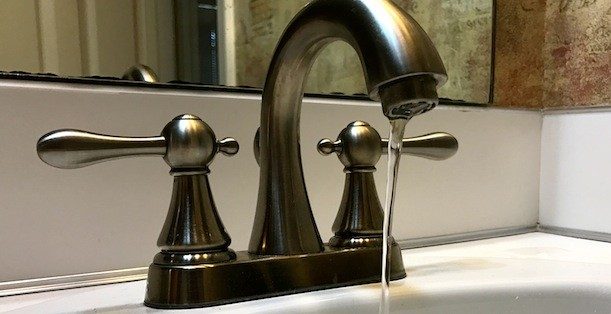Fort Smith city boss: ‘If consent decree doesn’t change, we’ll need to increase rates’
by October 25, 2017 3:25 pm 1,759 views

Fort Smith City Administrator Carl Geffken confirmed on Tuesday (Oct. 24) that without changes to the city’s estimated $480 million consent decree, water and sewer rates will continue to go up.
“If the consent decree stays as it is, we’ll need to increase rates, but our rates are already too high by the EPA’s own guidelines,” Geffken told Talk Business & Politics.
However, he foresees “favorable” conditions for the city in the next couple of months with the coming appointment of a new Region 6 Director. The Dallas-based office of the U.S. Environmental Protection Agency (EPA) has been a hurdle in the city’s efforts to renegotiate.
“When I testified up in Washington, it was brought to my attention that the Fort Smith consent decree was listed as a major accomplishment by the Department of Justice in 2015. Little old Fort Smith — 86,209 people as of the 2010 Census — is a major accomplishment?” Geffken said, adding the consent decree has placed untenable burdens on city ratepayers.
“As you’re seeing with our CIPs (capital improvement plans) for 2018, not only do you have the wastewater consent decree, you have wastewater normal. The Massard treatment plant needs to be upgraded. How are we going to do that? That’s not part of the consent decree. And then you’ve got stormwater issues, and you have to spend money on water, and luckily we have a dedicated revenue stream for streets, bridges, and drainage, but all that money is really coming from the same pot — this region — and after a while, when your median household income starts to drop.” Geffken trailed off. “You’ve got to look at the whole picture, not just, ‘Oh by the way, it’s wastewater.’ No, we have to fund police, we have to fund fire. We have a whole lot of needs, and a fixed pie it’s got to come from, because we’re not getting money from Washington.”
Geffken said President Donald Trump’s pick for the position will have to clear the U.S. Senate, and it should have already been confirmed “in April or May, but it’s come down to here (October). We’re hoping it (the pick/confirmation) would be this month or next, but it’s probably next. That’s a late timeline.” Geffken said he hopes a new Region 6 Director will make for “a more agreeable environment, and I think it will be.”
The acting director is Samuel Coleman, who started with the EPA during the first administration of President Bill Clinton in 1993. Coleman took the deputy director position in 2012, a position he held during the agency’s decision to lower the boom on Fort Smith for years long violations of the 1973 Clean Water Act.
With President Trump’s move away from the stricter policies of the Obama administration in the appointment of former EPA opponent Scott Pruitt to head the agency, Geffken’s is hopeful for a more amenable environment in which to renegotiate. Pruitt sued the agency four times during his time as Oklahoma Attorney General, and he was outspoken in criticisms of the Obama administration’s environmental policies.
If a new director follows suit, Geffken hopes to “sit with the regional administrator and say, ‘Here are our issues, and this is what we’d like to do.'”
“With the assistance of not only our internal staff but Burns & McDonnell and our external attorneys to prove why the request and the statements I made during my testimony up in Washington to our congressional staff, I’m hoping to show our concerns are valid for consideration,” Geffken said, adding the city will be asking for a substantial change to the decree, not just a two-year deadline extension.
Geffken said for an economically healthy city, the percentage of median household income (MHI) for billing should not exceed 2%. Fort Smith moved past that some time ago, and the MHI has continued to fall to the current $33,700 from a previous mark of $35,000.
Geffken continued: “I’m not saying Fort Smith isn’t strong, but when your median household income starts to decline over time — over the past two to three years — then you really can’t afford to pay 2%, and you shouldn’t pay 2%. It should be something less, and 1.6% is probably a good indication — between 1.5%-1.7%, I’d call it right down the middle.”
